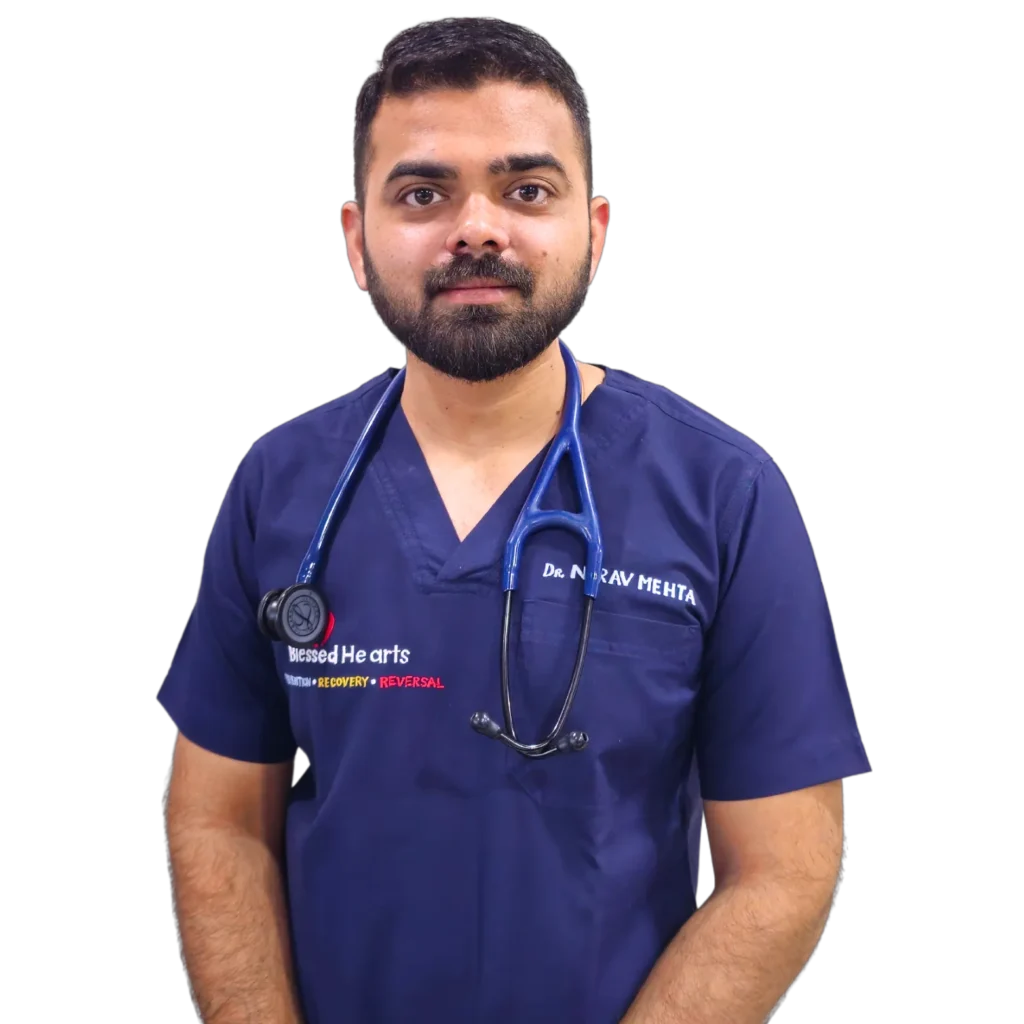General Question
Frequently Asked Questions
ESMR stands for Extracorporeal Shockwave Myocardial Revascularization. It is an advanced non-invasive treatment used to improve blood flow to the heart.
An ESMR therapy session typically lasts 20 to 30 minutes. Treatment plans usually include multiple sessions, spread over several weeks, depending on the severity of the condition.
ESMR therapy is generally free of significant side effects. Some side effects of ESMR therapy include mild discomfort or pain at the treatment site, bruising, and skin redness. These effects are usually temporary and resolve on their own.
ESMR therapy is offered at specialized cardiac care centers and clinics. If you are in Rajkot, you can find the best ESMR therapy at Blessed Hearts Clinic, known for its advanced technology and expert team dedicated to non-invasive heart care. Contact us to learn more and schedule a consultation.
EECP (Enhanced External Counterpulsation) therapy is a non-invasive treatment that uses inflatable cuffs wrapped around your legs. These cuffs inflate and deflate in sync with your heartbeat, improving blood flow to the heart. By enhancing circulation, EECP promotes the development of new blood vessels, known as collateral circulation, which helps bypass blocked arteries and improves overall heart function.
Yes, EECP therapy can improve ejection fraction, particularly in patients with heart failure or reduced heart function. Studies have shown that EECP enhances blood flow, reduces stress on the heart, and helps improve the efficiency of the heart’s pumping ability, which may lead to a better ejection fraction over time.
EECP is generally well-tolerated, but some patients may experience mild side effects, such as:
- Skin irritation or bruising where the cuffs are applied.
- Muscle or leg discomfort from the pressure of the cuffs.
- Fatigue following the therapy session.
These effects are temporary and can often be managed with adjustments to the treatment.
The success rate of EECP therapy varies depending on the condition being treated. Studies indicate that up to 95% of patients with chronic angina or heart failure experience significant symptom relief, reduced chest pain, and improved quality of life after completing the therapy.
ESMR (Extracorporeal Shockwave Myocardial Revascularization) therapy is a non-invasive procedure that uses low-intensity shockwaves directed at the heart. These shockwaves stimulate the formation of new blood vessels (angiogenesis) in the heart muscle, improving blood flow and oxygen supply to areas affected by reduced circulation. This helps alleviate symptoms and improve cardiac function.
ESMR therapy is primarily used to treat:
- Chronic angina (persistent chest pain).
- Ischemic heart disease (restricted blood supply to the heart).
- Patients who are not candidates for invasive procedures like angioplasty or bypass surgery.
Yes, ESMR therapy is considered safe and is approved for use in many countries. It is non-invasive and does not involve surgery, anesthesia, or radiation. Side effects are rare and typically mild, making it a suitable option for patients with advanced heart conditions or those unable to undergo invasive treatments.

